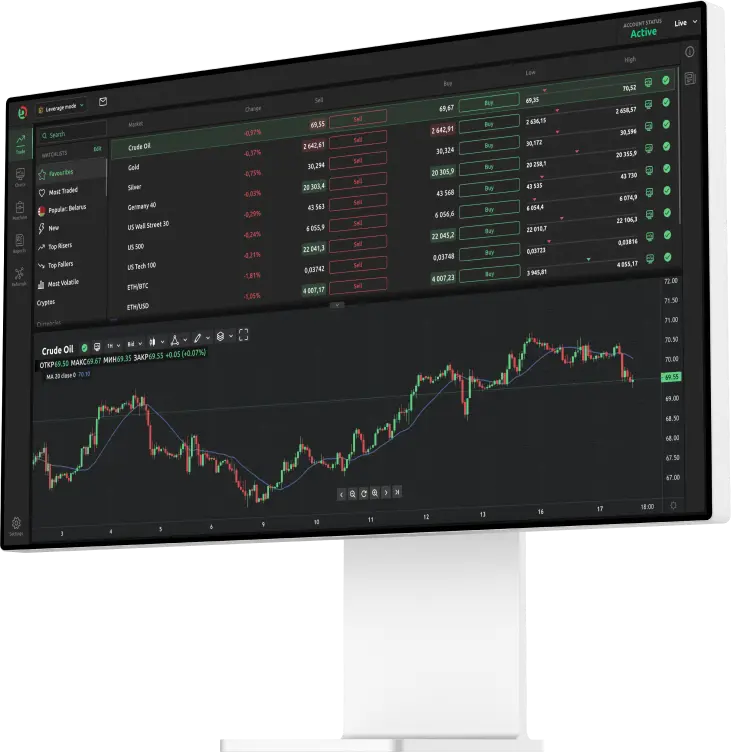Cardano’s ADA coin gained in 2021 but then suffered losses. Is recovery on cards in 2022?

Contents
- ADA and Cardano explained
- From the Cardano white paper
- ADA price history
- ADA coin price prediction
- FAQs
Cardano and the ADA coin have grabbed a lot of attention recently, and at the time of writing on 8 February 2022, Cardano is currently ranked as the seventh-largest coin by market cap. So, what’s next for the coin? Here we’ll look at making a Cardano price prediction for 2022 and beyond.
ADA and Cardano explained
What are the Cardano blockchain and the ADA coin? One of the key things to remember is that Cardano is the network and ADA is the cryptocurrency. While people talk about the “Cardano cryptocurrency” and the “Cardano coin”, that isn’t accurate. Nevertheless, an ADA coin price prediction is a de facto Cardano price prediction, so don’t worry too much about terminology.
Cardano is a blockchain, and the organisation behind the technology likes to emphasise how much it bases what it does on research. It wants people to notice the academic nature of its work, issuing its reports in peer-reviewed papers, which it hopes will encourage people to make use of the blockchain themselves.
Cardano was launched in 2017 by Charles Hoskinson, one of the founders of Ethereum. It was created to help in the world of decentralised finance, also known as DeFi.
The concept behind DeFi is, at heart, the concept behind cryptocurrency itself. Many people across the world have access to a mobile phone but do not have a bank account, and DeFi is designed to enable them to access financial services without having to go to a bank. DeFi also helps people send money internationally without having to pay commission, which makes transferring money across boundaries easier and cheaper.
Cardano uses smart contracts to carry out transactions. These are computer programs that carry out agreements once particular conditions are met. Most importantly, though, Cardano has its own native coin, called ADA, after the 19th-century British mathematician Ada Lovelace – daughter of the poet Lord Byron – who worked on Charles Babbage’s proposed mechanical computer, the Analytical Engine. She is often regarded as the world’s first computer programmer.
ADA lets holders vote on proposals concerning the governance of the blockchain. They can also delegate their voting rights in return for rewards.
As far as obtaining ADA goes, it can be bought and traded on a range of exchanges and it is also issued to people who manage the blockchain, called mCore nodes.
The coin is mined using an algorithm called Ouroboros, named after the mythical serpent that eats its own tail, and uses the proof-of-stake method. That means that how much you can mine is tied to how many coins you hold, rather than the miner having to solve increasingly complex equations. Proof-of-stake is also more ecologically sound than the proof-of-work method because it uses less electricity.
From the Cardano white paper
The ‘Why we are building Cardano: a subjective approach’ founding document is 44 pages long and was published on 28 June 2017, and it outlines the motivation behind the protocol’s development.
The white paper explains: “Cardano is a project that began in 2015 as an effort to change the way cryptocurrencies are designed and developed.”
In order to differentiate itself from other protocols, the white paper goes on to describe three major drawbacks of other blockchains: “First, unlike successful protocols such as TCP/IP, there is little layering in the design of cryptocurrencies. There has been a desire to preserve a single notion of consensus around facts and events recorded in a single ledger, regardless of whether it makes sense.
“Second, there is little appreciation for prior results in mainstream cryptographic research. For example, Bitshares’ delegated Proof of Stake could have easily and reliably generated random numbers using coin tossing with guaranteed output delivery, which is a technique known since the 1980s (see the seminal paper by Rabin and Ben-Or).
“Third, most altcoins (with a few notable exceptions, such as Tezos) have not made any accommodation for future updates. The ability to successfully push a soft or hard fork is pivotal to the long-term success of any cryptocurrency.”
ADA price history
Before we can make an ADA coin price prediction, it makes sense to look at the ADA coin price history. While past performance is no indicator of future results, it helps provide context for how people are reacting to Cardano and ADA.
When ADA launched in 2017, it traded at around the $0.02 mark for most of the year. This changed dramatically in early 2018. Cryptocurrency prices soared around this time, and ADA was no exception. It went from an intraday low of $0.3679 on 28 December 2017 to an intraday high of $1.33 on 4 January, a rise of more than 260% in less than a week.
While those highs were, ultimately, unsustainable and the coin ended up settling back to somewhere around the $0.08 mark for the next couple of years, the ADA coin and the Cardano blockchain had, albeit briefly, made their mark on people who followed the crypto market.
The ADA coin price changed significantly in early 2021. This was a time of substantial growth in the cryptocurrency market, which rewrote some people’s ADA predictions. On 1 January, the coin opened at $0.1814. By 16 January, it had more than doubled to $0.3654.
This was followed by some steady progression. Then, on 5 February, it leapt up, with ADA’s intraday low of $0.4396 being followed by an intraday high of $0.5567 on the same day, notching up a rise of more than 25% in a matter of hours. ADA and Cardano did not stop there, though – on 10 February, the coin reached an intraday high of $0.9439, representing an almost 70% increase in the space of five days.
By now, it seemed inevitable that the ADA coin price would break through the dollar barrier, which it did on 20 February, closing at $1.12.
Although it retreated somewhat after that, hitting an intraday low of $0.9931 on 13 March, it spent most of the next month above the dollar mark. More growth followed, with ADA reaching $1.56 on 14 April. Again, though, the peak was followed by a trough and it fell to an intraday low of $0.9352 on 23 April before recovering to close at $1.16.
It was after this blip that things became really encouraging for the cryptocurrency’s followers. ADA closed at $1.55 on 12 May, but that was down from the day’s intraday high of $1.82. Two days later, it broke $2 for the first time and reached a new peak at the time of $2.46 on 16 May.
Storm clouds were on the horizon, however, and the great cryptocurrency crash of 19 May saw the value of ADA almost halve – going from an intraday high of $2.03 to an intraday low of $1.03. While there was some recovery, with it closing the day at $1.48, it looked as though the damage had been done and the ADA coin price stayed below the $2 mark.
That was until the start of September, when it reached an all-time high of $3.10 on 2 September. The ADA price then crashed following its Alonzo hard fork upgrade on 12 September.
By 5 October, the ADA price closed at $2.23. The price stabilised around this point for the next week or so, but then started to deflate. It hit an intraday low of a little over $2.07 on 12 October, before rallying slightly to a little over $2.19 on the morning of 14 October and advancing upwards to $2.22 that evening. Five days later, it dropped back to $2.10. On 24 October, the coin was trading at $2.17.
On 23 November 2021, eToro announced it would delist the coin, citing regulatory concerns, and the coin continued trading sideways well into December and January. Many altcoins suffered over a weak fourth quarter in 2021, and ADA was no exception. Opening on 1 December at $1.55, the coin closed 31 December at $1.31, a loss of over 15%.
The coin opened on 1 January 2022 at $1.31 and remained volatile. Cardano announced on 9 January that the team had hit a new milestone – one million trees had been planted and recorded on the Cardano blockchain, for “enhanced transparency and to serve as public proof of land restoration activities”. The coin peaked at $1.63 on 18 January.
The first decentralised exchange (DEX) SundaeSwap went live on 20 January, but congestion issues plagued the update. By the end of the month, the coin was trading at lows of $1.01.
A new major milestone was met on 8 February, and the total number of Cardano transactions surpassed 30 million, aligning roughly with Cardano’s projected increase in network activity. At the time of writing, the coin was trading at roughly $1.18.
So, what now of the future? What sort of Cardano price predictions can be made? What is the Cardano price prediction for 2022 and beyond? Let’s take a look.
ADA coin price prediction
Long-term coin price predictions are made using computer algorithms and should never be taken as an accurate forecast of the Cardano future price. Wallet Investor indicates bullish development for the Cardano coin price prediction. It forecasts the ADA coin price will hit $2.57 in a year’s time and $8.11 in five years.
CoinPriceForecast’s ADA coin price prediction for 2022 suggests closing out the year at $1.86. By the end of 2023, the coin could be worth as much as $2.45. The site suggests a general year-on-year uptrend, and the ADA price prediction for 2030 is for the coin to reach $5.09.
DigitalCoinPrice’s Cardano prediction for 2022 states that the ADA coin price could be $1.57 in March, but go up slightly to $1.59 in April. The site suggests the coin will be worth around $1.68 in December. Its Cardano prediction for 2023 could see an average price of $1.86; in 2024 an average of $1.95; in 2025 an average of $2.64; and in 2026 an average of $2.27. Its Cardano prediction for 2028 is $4.13.
FAQs
As of 8 February 2022, there are 33.58 billion ADA coins in circulation, out of a maximum supply of 45 billion. That’s almost 75% – according to CoinMarketCap.
There is no published forecast data to suggest Cardano will reach $10 within the decade, but Wallet Investor suggests the coin could reach $8.11 in five years’ time. CoinPriceForecast suggests the coin could be worth $6.12 by the end of 2033. It is worth bearing in mind, though, that cryptocurrencies are highly volatile and price forecasts are very often wrong, so you should always exercise caution.
DigitalCoinPrice suggests a value of $2.64 for the year, Wallet Investor suggests highs of around $6.59 and CoinPriceForecast suggests a mid-year value of $2.99. These figures are highly speculative, so you need to do your own research before committing to ADA.
The ADA coin might be, but equally, it might not be. Always remember that cryptocurrencies are extremely volatile and that prices can go down as well as up. You should always do your own research and never invest more money than you can afford to lose.

